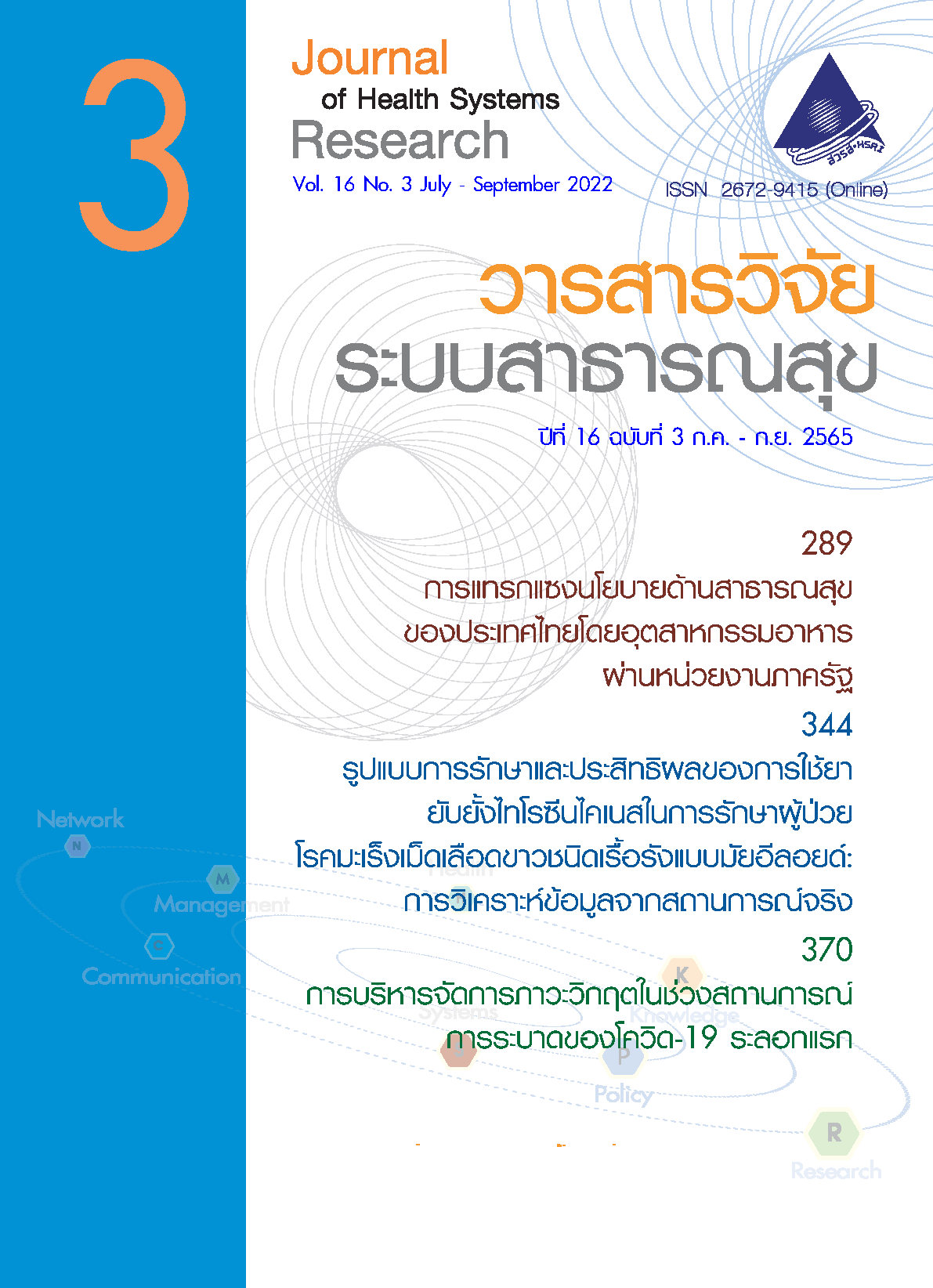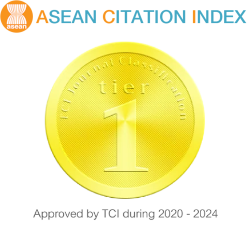Treatment Patterns and Effectiveness of Tyrosine Kinase Inhibitors in Patients with Chronic Myeloid Leukemia: Evidence from a Real-World Data Analysis
Keywords:
treatment pattern, effectiveness, tyrosine kinase inhibitors, chronic myeloid leukemia, real-world data analysisAbstract
A retrospective cohort study using real-world data was conducted to analyze the treatment patterns of tyrosine kinase inhibitors in patients with chronic myeloid leukemia (CML), compared with the guideline for regulating drug use of the National List of Essential Medicine (NLEM) category E(2), with the purpose of determining the effectiveness of tyrosine kinase inhibitors in CML patients covered by Thailand’s universal coverage scheme and social security scheme. This study focused on the treatment patterns and effectiveness of imatinib, nilotinib, and dasatinib. Data were obtained from the reimbursement database of the NLEM category E(2) during fiscal year 2012-2018. Patients were followed up until death or the end of fiscal year 2019. Descriptive statistics and non-parametric test using Kaplan-Meier method were performed in the analysis. CML patients were divided into 3 groups based on their medical history until the time of death or last follow-up as follows; 1) patients who received imatinib only (group A), 2) patients who received first-line imatinib and second-line nilotinib (group B), and 3) patients who received first-line imatinib, second-line nilotinib, and third-line dasatinib (group C). Of 574 CML patients, there were 400, 113 and 61 CML patients in groups A, B and C, respectively. The majority of patients in each group were between the ages of 30 and 39 years old (34.2%, 36.3% and 29.5 %, respectively), with a median follow-up of 36.6, 50.7 and 47.6 months. Prior to the last follow-up or drug switching, the average daily dose of imatinib in group A, B and C was 444.3, 474.1 and 474.8 mg, respectively. Real-world effectiveness using survival analysis revealed 2-year survival rates at 84.3% (95%CI: 80.3-87.6%) for group A, 91.0% (95%CI: 83.9-95.1%) for group B and 85.2% (95%CI: 73.4-92.0%) for group C, with 5-year survival rates in each group were 83.2% (95%CI: 78.9-86.7%), 85.7% (95%CI: 76.7-91.4%), and 66.4% (95%CI: 52.3-77.2%), respectively. Average daily dose of imatinib prior to drug switching was not complied with the guideline, which recommended high-dose imatinib (600-800 mg/day). The 2-year survival rates were comparable across groups (log-rank p-value 0.295), while the 5-year survival rates in group A and B were significantly higher than in group C (log-rank p-value: group A vs. C; 0.016, group B vs. C; 0.004). However, the causes of non-adherence to the guideline could not be identified due to the lack of important clinical data including cytogenic/hematologic response, drug resistance, and occurrence of adverse drug events during the treatment of CML.
References
Announcement of the National Drug Committee on National List of Essential Medicine B.E. 2551 (2008). The Royal Thai Government Gazette, Volume 125, Special Section 51 Ngor. (Mar 10, 2008). (in Thai)
Chaikledkaew U, Teerawattananon Y (Editors). Guidelines for health technology assessment in Thailand. 2nd ed. Nonthaburi: Watcharin P.P.; 2014. (in Thai)
Rothwell PM. External validity of randomised controlled trials: “to whom do the results of this trial apply?”. The Lancet. 2005;365(9453):82-93.
Nason E, Husereau D. Roundtable on real world evidence system readiness–are we ready to use routinely collected data to improve health system performance. Institute on Health Economics. 2014 [accessed on: 2021 Feb 12]. Available from: https://www.ihe.ca/download/real_world_evidence_system_readiness_summary_report.pdf.
Announcement of the National Drug Development System Committee on National List of Essential Medicine B.E. 2561 (2018). The Royal Thai Government Gazette Volume 135, Special Section 14 Ngor. (Jan 19, 2018). (in Thai)
Announcement of the National Drug Development System Committee on National List of Essential Medicine B.E. 2560 (2017). The Royal Thai Government Gazette Volume 134, Special Section 119 Ngor. (Apr 28, 2017). (in Thai)
Thorpe CT, Johnson H, Dopp AL, Thorpe JM, Ronk K, Everett CM, et al. Medication oversupply in patients with diabetes. Res Social Adm Pharm 2015;11(3):382-400.
The Subcommittee of National List of Essential Medicine. The minutes of the Subcommittee of National List of Essential Medicine meeting no. 2/2015; 2015 February 27; venue: Thai Food and Drug Administration, Nonthaburi. (in Thai)
Downloads
Published
How to Cite
Issue
Section
License
Copyright (c) 2025 Journal of Health Systems Research

This work is licensed under a Creative Commons Attribution-NonCommercial-NoDerivatives 4.0 International License.
Journal of Health Systems Research is licensed under a Creative Commons Attribution-NonCommercial-NoDerivatives 4.0 International (CC BY-NC-ND 4.0) license, unless otherwise stated.




